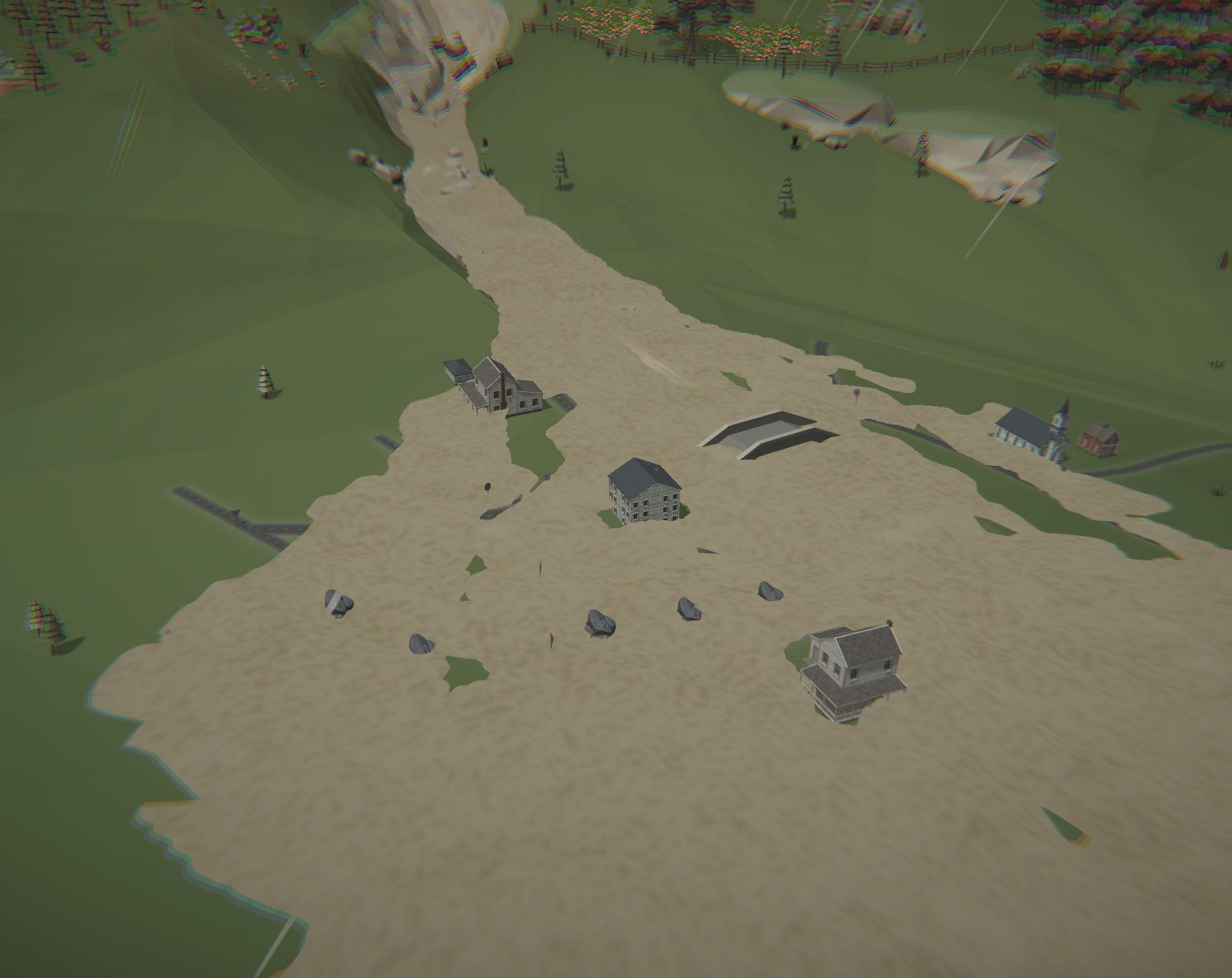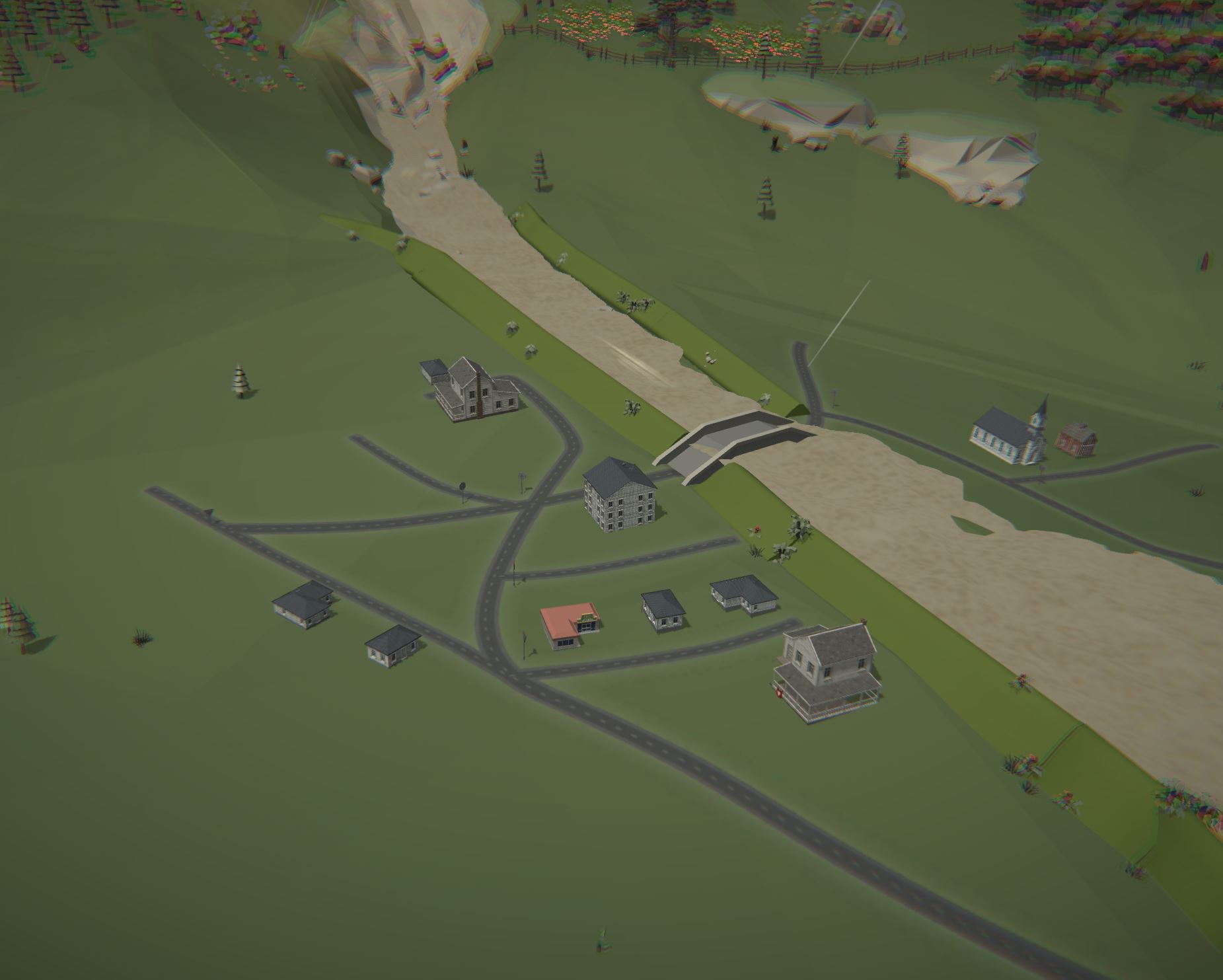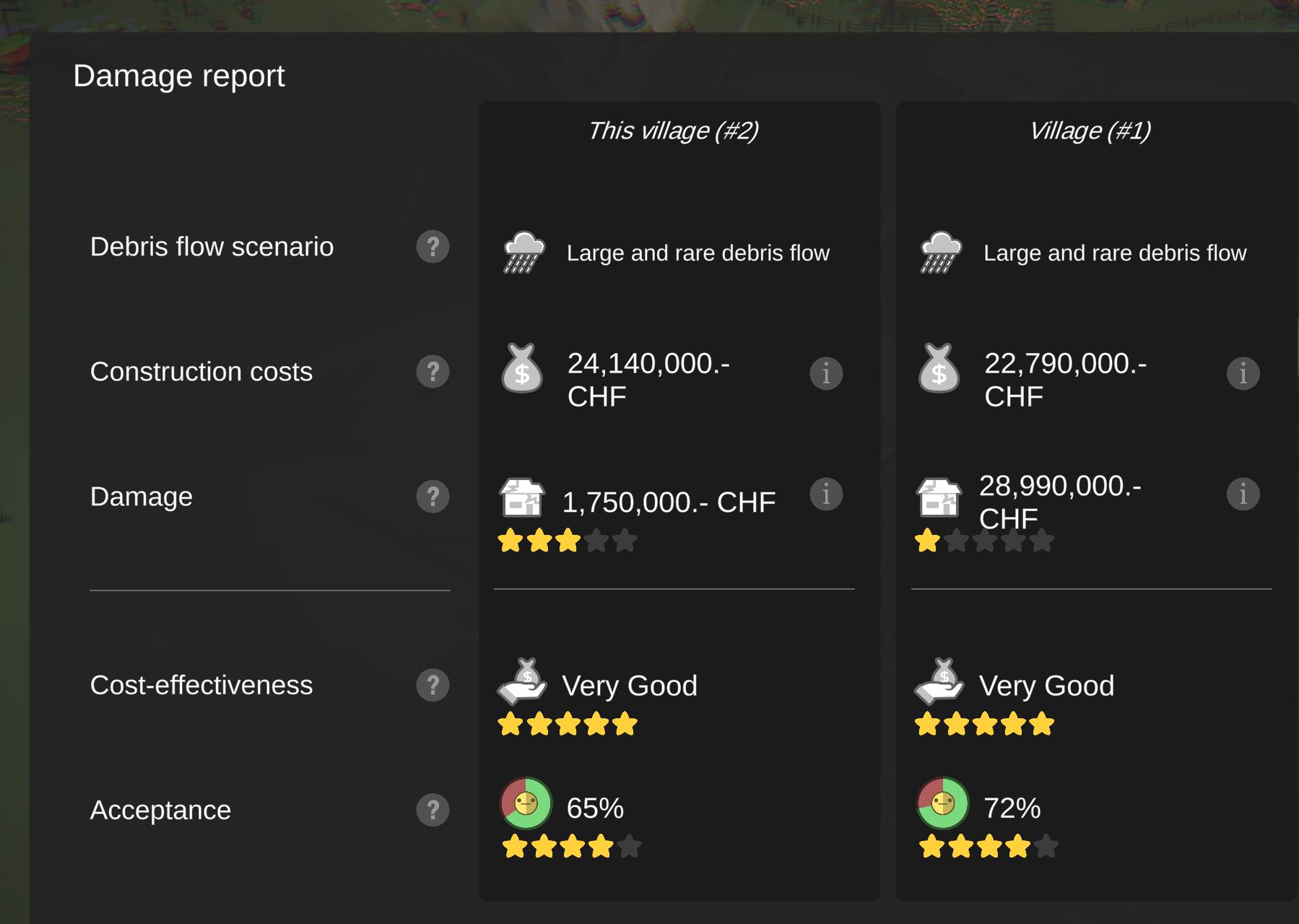21 January 2022
Murgame: a debris flow game from the WSL
Posted by Dave Petley
Murgame: a debris flow game from the WSL
GeoPrac.net recently highlighted that the Swiss Federal Institute for Forest, Snow and Landscape Research (WSL) has written an interactive game, Murgame, that both highlights the risks associated with debris flows to mountain communities and that gives the player experience of the effectiveness, and economics, of various types of mitigation. The game can be accessed for free online and is available in a range of languages, including English. It is good fun to play.
The premise of the game is that the player is asked to design and build a village that meets key parameters (number of inhabitants, schools, shops, farms, etc). The location of the village is on either side of a debris flow channel. Once constructed, the player simulates either a large or a small debris flow. Murgame uses the well-known and very effective RAMMS simulation tool to assess the debris flow behaviour. At the end of the event, which plays out on the screen, the user is presented with data on the costs of the event to their village.
The player can then design various mitigations, which range from soft (an information centre and/or a siren) to hard (levees along the channel for example). The simulation is then run again, and the impact on the villages, as well as the acceptability of the measures to the local population and the cost-effectiveness, are calculated.
I played the game to design a small village (18 inhabitants) with a school, a farm and a shop. I then simulated the large debris flow. The outcome was not a happy one:-

A simulation of a large debris flow on a small village in Murgame.
.
I then constructed some levees along the channel to protect the village and re-ran the simulation:-

A simulation of a large debris flow on a small village with levees in Murgame.
.
The game demonstrates that the levees are highly effective in controlling the flow, and the village emerges mostly unscathed. Of course this is an unsightly and expensive option though. The game provides an assessment of the amount of damage prevented, the cost-effectiveness of the measures and the acceptability to the residents:-

The effectiveness of the measures to protect the small village in Murgame.
.
The player can then experiment with other measures, and with other village configurations, to explore the balance between loss, investment and acceptability.
I thoroughly recommend Murgame – it’s fun, educational and valuable. I can imagine using it to raise awareness with older school children, students and members of the public. WSL should be commended for this initiative.


 Dave Petley is the Vice-Chancellor of the University of Hull in the United Kingdom. His blog provides commentary and analysis of landslide events occurring worldwide, including the landslides themselves, latest research, and conferences and meetings.
Dave Petley is the Vice-Chancellor of the University of Hull in the United Kingdom. His blog provides commentary and analysis of landslide events occurring worldwide, including the landslides themselves, latest research, and conferences and meetings.
Excellent
i am not a gamer, but i will probably give this a try. ( Boston, MA )
Travelling through the Alps with my parents back in the ’60s, I noticed many houses and other buildings built like cartoon ships, with a massive up-hill ‘Prow’ and a ‘stern cabin’ with balcony a dozen feet above sloping ground.
Dad took one look, nodded, confirmed, “Avalanche area. Prow splits slide, balcony lets them escape.”
{ Shiver… }
Thank you for your review on our serious game! I’d just like to add that the MurGame was developed by geo7, Koboldgames and SLF/WSL and funded by Präventionsstiftung der Kantonalen Gebäudeversicherungen, die Mobiliar and Bundesamt für Umwelt.
Additional developments are possible, and therefore user feedback is welcomed by the developers and promoters of the MurGame.
Best regards, Catherine Berger / geo7 AG
I conceive this web site has some really excellent info for everyone :D. “Heat cannot be separated from fire, or beauty from The Eternal.” by Alighieri Dante.